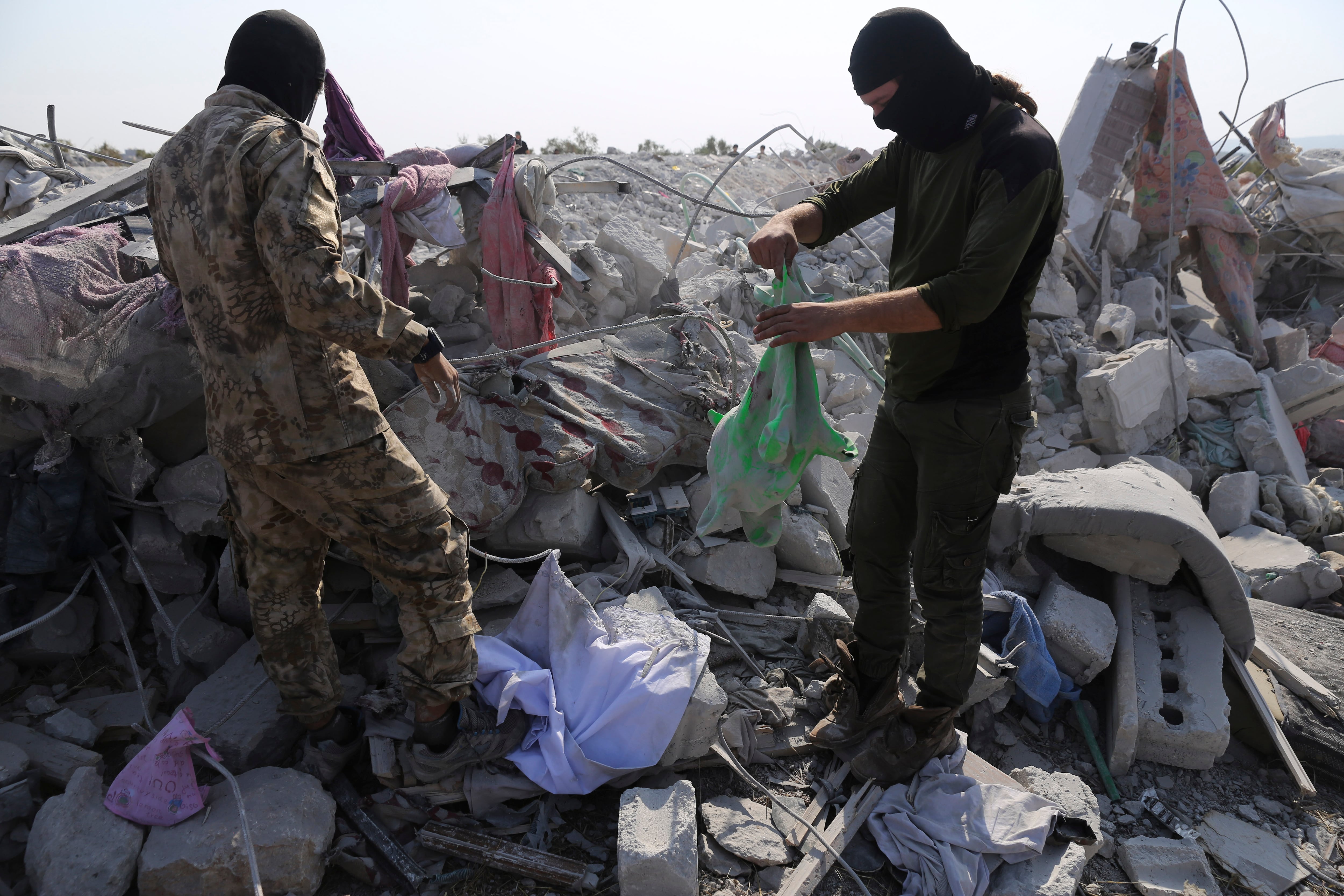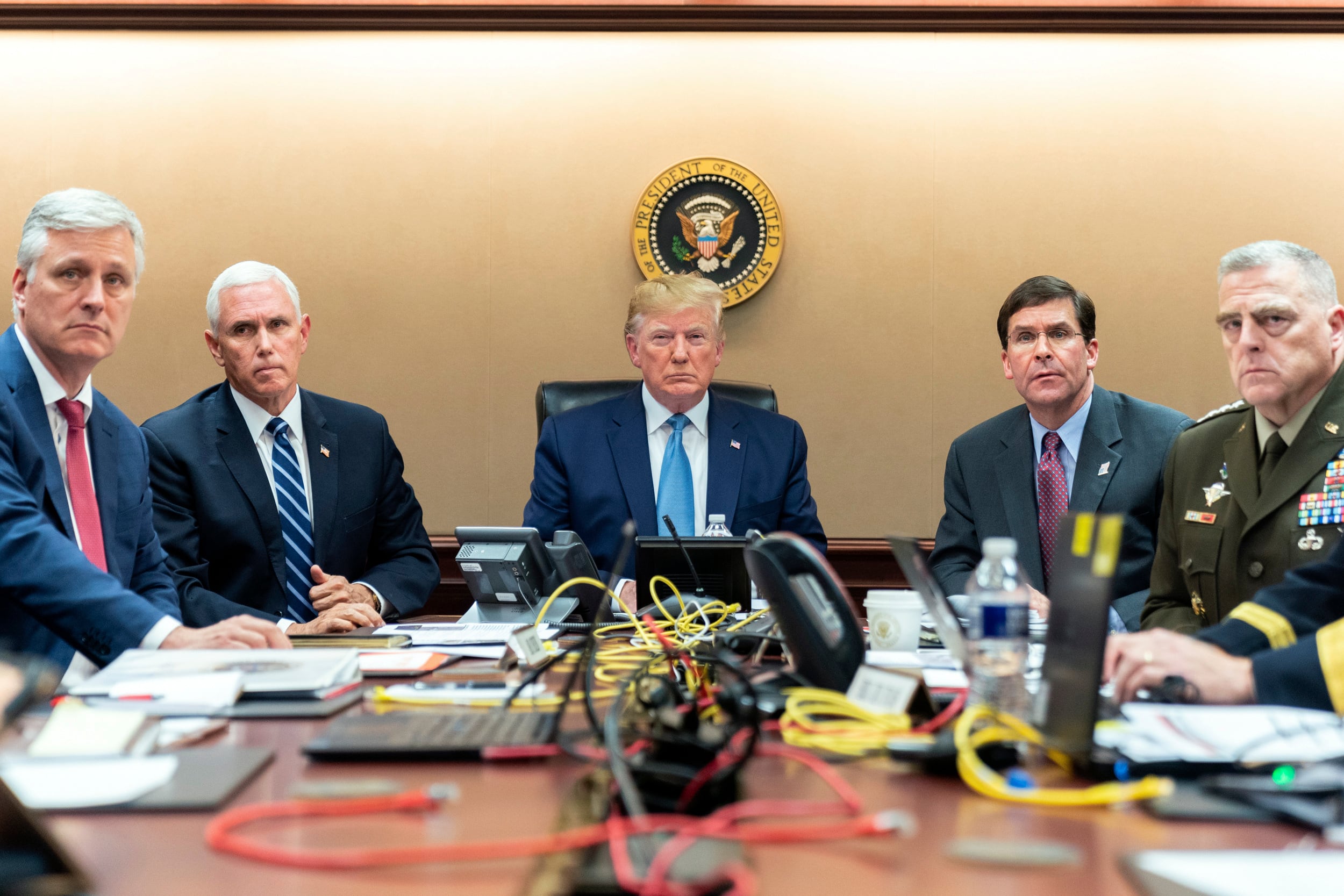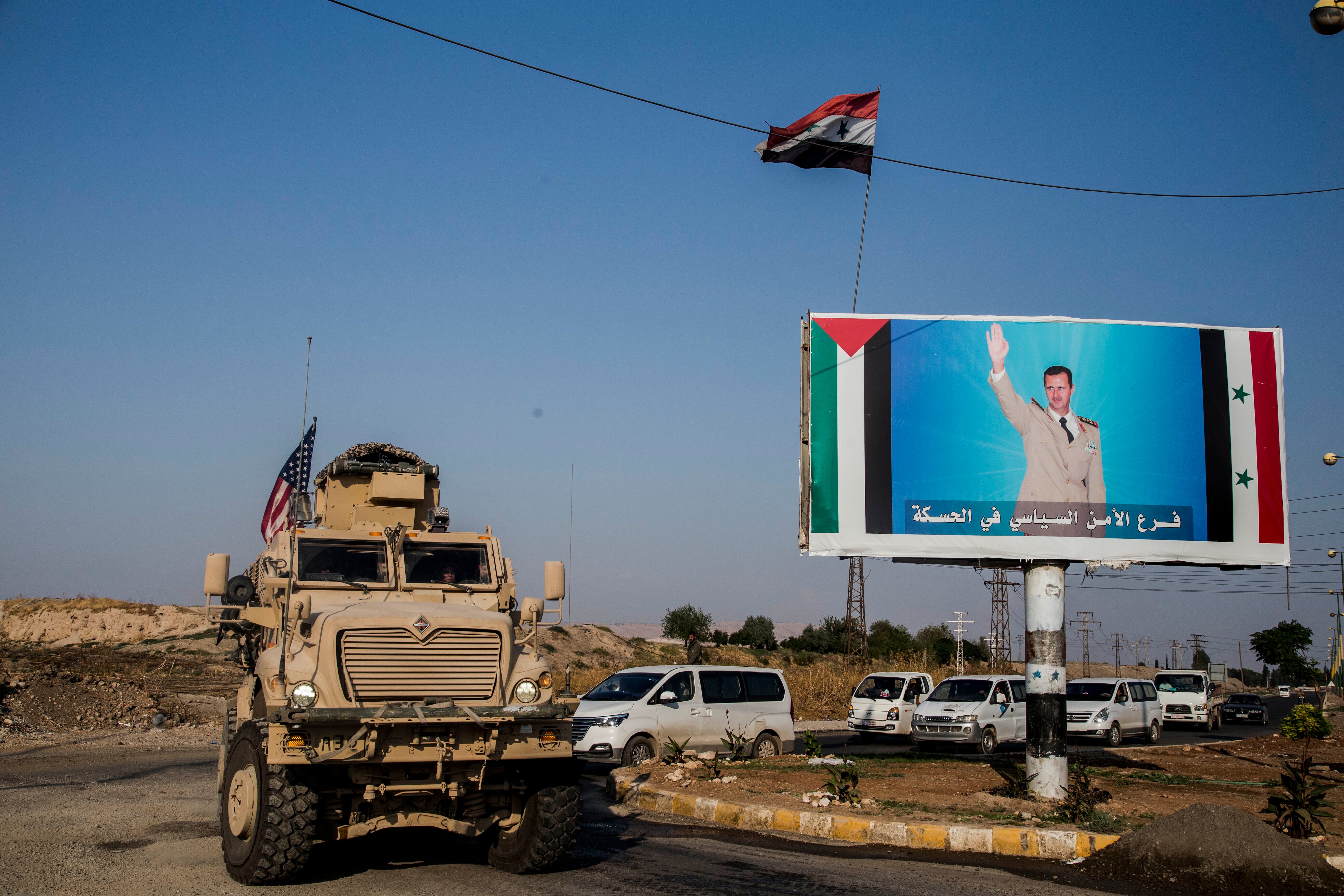The American commando raid that bagged Islamic State leader Abu Bakr al-Baghdadi was launched from the sprawling al-Asad Air Base in Anbar province, Iraq, according to a source on the ground with direct knowledge of the operation.
The source told Military Times on condition of anonymity because he was not authorized to speak on the record that U.S. forces rehearsed the raid in Erbil, Iraq, using concrete T-walls to practice breaching. While on the ground during the raid to capture or kill the ISIS leader, American forces blew a hole in the side of the compound — avoiding the booby-trapped entrance, President Donald Trump detailed Sunday morning.
American commandos also launched from a second location in Syria, the source said. But it’s unknown if the target of that raid force was al-Baghdadi. Military Times is withholding the location of where U.S. forces launched from within Syria due to operational security concerns. The site is home to a Joint Special Operations Command base hosting Delta Force and Army Rangers.
Just hours after the ISIS leader’s demise became public, Syrian Democratic Forces — the U.S.-backed anti-ISIS force in northern Syria — announced that a close associate to al-Baghdadi, Abu Hassan al-Muhajir, was killed.
Mazloum Abdî, the commander of the SDF, tweeted Sunday that al-Muhajir was killed due to SDF intelligence shared with the U.S. military.
The Pentagon would not confirm the launch points for the operation when asked by Military Times, citing operational security. Officials with Operation Inherent Resolve — the U.S.-led mission to defeat ISIS in Iraq and Syria — did not immediately respond to a request for comment.
RELATED

On Saturday, nearly 100 American commandos launched a brazen nighttime heliborne raid in al-Qaida-infested Idlib province, Syria, to kill the elusive ISIS leader al-Baghdadi.
Cornered in a dead-end tunnel with American military working dogs bearing down on him, al-Baghdadi detonated a suicide vest killing himself and three children he had dragged into the tunnel with him.
A working dog was injured in the blast. But Army Gen. Mark Milley, chairman of the Joint Chiefs of Staff, told reporters Monday at the Pentagon that the dog has since returned to duty with his handler.
Secretary of Defense Mark Esper told the Sunday morning ABC news show “This Week” that American troops rehearsed actions on the objective about a week before the raid.

Milley said Monday that two adult males were pulled off the target site where al-Baghdadi was killed and are being held in at a secure facility. Milley provided no other details about the location of the detainees.
Al-Baghdadi’s remains were moved to a secure location where they were identified and later disposed of in accordance with the law of armed conflict, according to Milley.
American troops were amid a withdrawal from Syria prior to Saturday’s raid that killed the founder and leader of ISIS. Trump has since slightly backtracked on the decision to vacate northern Syria entirely — opting to keep a small residual force to protect oil wells and counter a potential ISIS resurgence.
RELATED

Esper reiterated Monday during a Pentagon press briefing that U.S. forces moving back into Syria will included some “mechanized” forces. But the Pentagon has not provided any details on what kind of mechanized forces will move into eastern Syria near the oil fields.
Esper told reporters Monday that he still expects U.S. force numbers to be below the roughly 1,000 troops that had been based in the country before Trump’s order to withdraw. But experts argue the use of American armor to protect oil fields in Syria could require additional forces and put a strain on military logistics.
The oil fields in eastern Syria are a contentious issue.
This area has been the scene of unusual confrontations with U.S. forces, such as a one-sided battle in February 2018 in which a pro-Syrian government force reported to be mainly private Russian mercenaries unleashed an artillery barrage near a small U.S. military outpost. As then-Defense Secretary Jim Mattis recounted the episode in congressional testimony two months later, he ordered the attacking force to be “annihilated — and it was” after Russian authorities insisted the attackers were not their troops.

The Pentagon has consistently stated that the U.S. mission to protect the Syrian oil fields is aimed at keeping the oil out of the hands of a potential ISIS resurgence.
However, Esper acknowledged Monday, that American forces in the region would also block access to the lucrative oil fields from Syrian and Russian forces. Esper said that the SDF rely on funds from the oil fields to help fund their forces and maintain ISIS prisons.
Esper also said American forces protecting the oil fields were prepared to use “overwhelming military force” in self defense of their forces.
Esper said Monday that he has seen no sign of Syrian or Russian forces challenging U.S. control of the oil fields.
The Associated Press, citing a U.S. official, reported that the U.S. has detected what appears to be a massing of Russian and Syrian forces on the western side of the Euphrates River near Deir el-Zour.
Russian officials were contacted by phone, and the U.S. was given assurances that the staged forces would not move east, the official said, speaking on condition of anonymity to discuss a sensitive issue.
Jim Jeffrey, the Trump administration’s special envoy for Syria, seemed to refer to this episode when he said last Friday, “We are currently very concerned about certain developments in the south, in the Deir el-Zour area. I’ve talked to my Russian colleague about that and we’re having other contacts with the Russians concerning that situation. We think it is under control now.”
After expelling Islamic State militants from southeastern Syria in 2018, the Kurds seized control of the more profitable oil fields to the south in Deir el-Zour province.
The U.S. will also keep a small number of U.S. troops at the Tanf garrison near the Syria-Iraq border. American commandos housed at Tanf are tasked with training an anti-ISIS force separate from the SDF mission.
This story contains information from the Associated Press.
Shawn Snow is the senior reporter for Marine Corps Times and a Marine Corps veteran.
Howard Altman is an award-winning editor and reporter who was previously the military reporter for the Tampa Bay Times and before that the Tampa Tribune, where he covered USCENTCOM, USSOCOM and SOF writ large among many other topics.





